Panasonic Lumix DMC-G10 Review
Panasonic Lumix DMC-G10
We take a look at the entry-level model for the G-Micro system
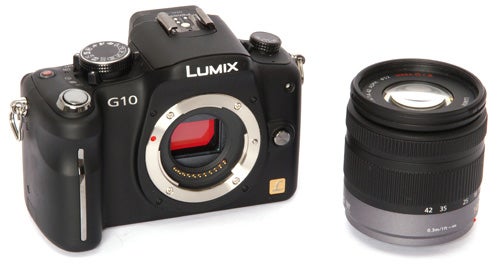
Verdict
Pros
- Excellent build quality
- Good picture quality
- Exceptional performance
Cons
- Disappointing viewfinder
- Poor noise control at high ISO settings
- Cut-down video mode
Key Specifications
- Review Price: £449.99
- 4-42mm standard kit lens
- 12.1 megapixels
- 3x optical zoom
- 17.3x13mm
- 558g
The G10 is the new entry-level model of the range. Its stablemate the G2, featuring a high-res field sequential viewfinder, articulated monitor and HD video is currently selling for around £550, while of the first generation models the 1080p HD video equipped GH1 is selling for around £900 and the compact GF1 is around £650. The G10 is currently priced at around £450 as a kit with the new 14-42mm f/3.5-5.6 standard zoom lens, which seems very reasonable until you discover that the original G1 is still available with a kit 14-45mm lens for around £440. However price isn’t the main selling point of the G-Micro series; in fact you can get a good APS-C digital SLR for around £100 less than the price of the G10. 
More worrying for Panasonic is the growing competition from other brands, particularly the extremely impressive Samsung NX10, selling for around £470 but equipped with a full-sized 14.6MP APS-C CMOS sensor and 7.5cm AMOLED monitor. Sony has also just launched the NEX-3, which also has an APS-sized sensor of 14.2MP and is crucially much smaller and lighter than even the GF1, for £450 with a 16mm lens. Panasonic’s developments partners Olympus have the stylish Pen E-P1 available for around £380. Faced with this growing competition is Panasonic’s new starter model priced just a little too high?
At first glance the G10 is almost indistinguishable from the G1 or G2. It has the same relatively compact SLR-style body, made from tough resin plastic over a metal frame. The build quality is excellent, with tight panel joins and strong secure hatches. The matt surface provides plenty of grip and resists marks and scratches surprisingly well. Unlike the other models in the G-Micro series, which are available in a range of colours, the G10 is only available in the matt black finish shown here.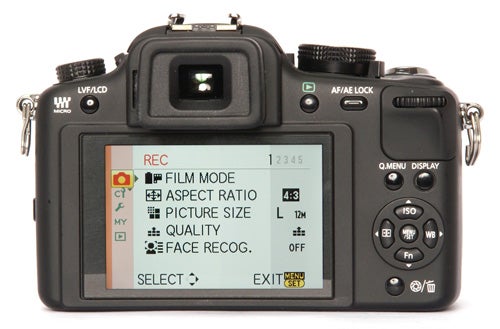
The control layout is also very similar to the previous models, with a chunky main mode dial on the top right panel and a smaller AF mode dial on the top left. However a closer inspection reveals a few important differences, the most obvious being the monitor. It is still an impressively fast and very sharp 7.5cm (3.0 inch) 460k TFT LCD screen as before, but where the G1 and G2 (and indeed the GH1) have articulated monitors able to flip and twist around a side-mounted hinge, the G10 has a fixed screen like the GF1. In most other respects the control layout is identical to the G2, with the rear-mounted control wheel (it was on the front on the G1) and a dedicated illuminated button for the iAuto mode. The only obvious difference is the lack of a dedicated video recording button.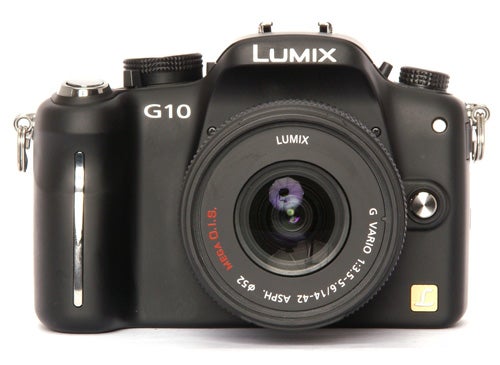
Another way in which the G10 differs from its more expensive siblings is the electronic viewfinder. The G1 and G2 have excellent field-sequential displays that provide sharpness almost as good as an optical TTL viewfinder, but the G10 is equipped with a cheaper standard TFT LCD display viewfinder, with a resolution of 202,000 dots. It’s not bad, with decent colour and a fast refresh rate, but it’s nowhere near sharp enough for accurate manual focusing, even though it does automatically magnify the view in manual focus mode a soon as the focus ring is moved.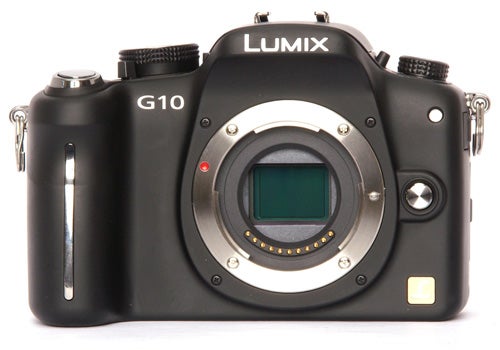
Internally the G10 shares most of the same features as the G2. It has the same Four-Thirds format 12.1-megapixel Live MOS sensor, measuring 17.3 x 13.0mm, the same as the sensors in full sized Four-Thirds DSLRs. Like the other G-Micro cameras the G10 has no internal image stabilisation, but some of the system lenses do feature Panasonic’s Mega OIS optical stabilisation technology, although these are quite expensive. The high quality Leica-branded 14-50mm f/2.8-3.5 Mega OIS standard zoom is around £770, and the f/4.0-5.6 45-200mm telephoto zoom is £275.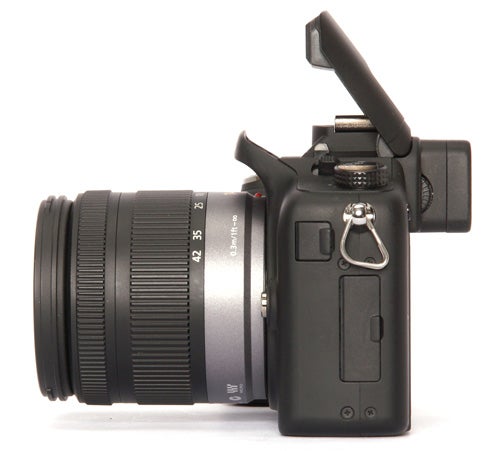
Like the G2 the G10 is equipped with Panasonic’s Intelligent Resolution technology, which is the latest attempt to get us to like the idea of digital zoom. It enhances edge contrast and detail on digital zoom shots, and does improve image quality somewhat, but it’s still no substitute for a proper telephoto lens.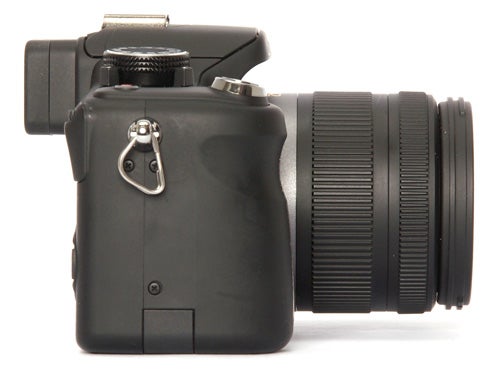
Unlike the G1, the G10 has a video recording mode, but again this is a slightly cut-down feature. It records at a resolution of 1280 x 720 pixels and 30 frames a second, with mono audio recoded via a single internal microphone, but unlike the G2 it does not have the option to plug in a stereo microphone. Video is recorded in Motion JPEG format rather than the superior AVCHD format of the G2 and GH1. Picture quality is pretty good though, and the microphone has automatic wind cut, so the sound quality isn’t bad either.
One thing that hasn’t been cut down is the camera’s exceptional performance. It can start up and take a picture in a little over one second, and in single shot mode it can maintain a consistent speed of one shot every 0.7 seconds, which is very good by any standard, although some full-size DSLRs are faster. In continuous shooting mode it can maintain approximately three frames a second, although the number of shots it can shoot in a row depends on the speed of the memory card being used. With a fast class 10 card it can manage 18 shots before slowing down to empty the buffer.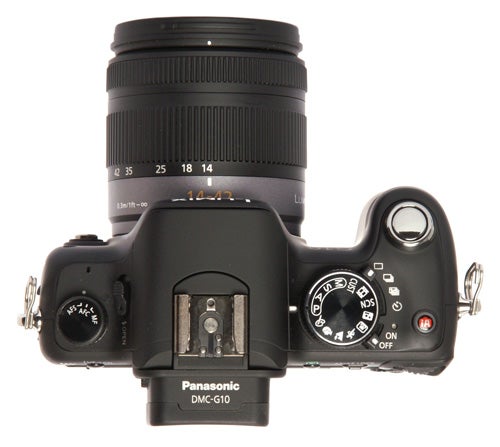
Like other mirrorless system cameras the G10 has a contrast detection autofocus system which uses the imaging sensor, rather than the faster phase detection systems used in conventional DSLRs. Nonetheless focusing is exceptionally fast and reliable in all lighting conditions, and doesn’t slow down noticeably in low light. The G10 has a bright AF assist lamp with a useful range of about three metres. The pop-up flash is also very good, with a guide number of 11 at 100 ISO, and is easily capable of filling a large room with good frame coverage even at wide angle.
In terms of overall image quality the G10 is virtually indistinguishable from the G2. Exposure metering is extremely accurate and reliable, colour depth and saturation are superb, and dynamic range is also very good. The new 14-42mm standard kit lens is significantly better than the old one, with excellent edge to edge sharpness and no visible chromatic aberration at any focal length or aperture setting.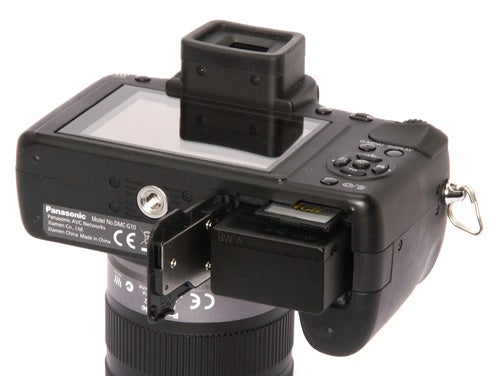
Noise control is very good at lower ISO settings, but like most Four-Thirds sensor cameras there are some problems at higher sensitivities. There is visible noise and colour mottling at 400 ISO, and this gets progressively worse as speed increases, until the 6400 ISO setting is virtually unusable. Hopefully Panasonic and Olympus will adapt the new back-illuminated sensor technology to the Four-Thirds system and reap some of the benefits of reduced noise. Until then however the larger APS-C sensors employed by its rivals will continue to have an advantage in image quality.
”’Verdict”’
Although it is lacking a few amenities, the Panasonic Lumix G10 doesn’t lose out too badly to its more expensive stablemate the G2. The viewfinder is a bit disappointing, but the performance and image quality more than compensate. Build quality, handling and usability are all first rate, and the camera has the feel of a quality product. The only question is whether it can compete with its new rivals at its current price.
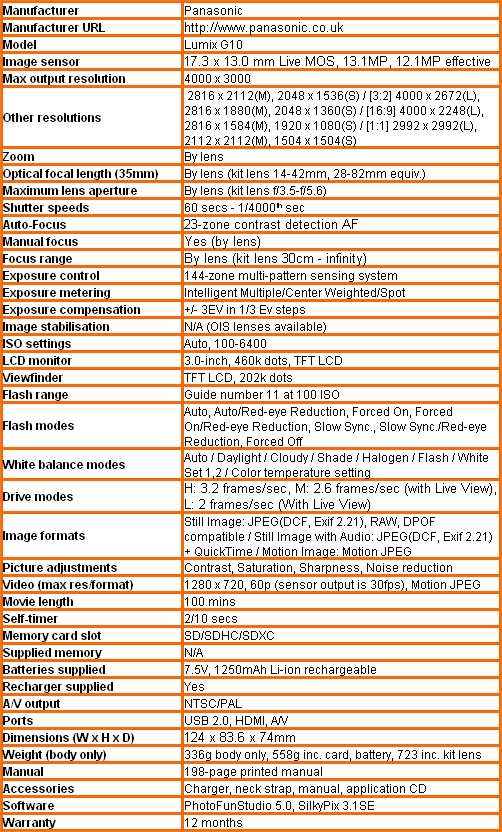
”Over the next few pages we show a range of test shots. On this page the full size image at the minimum and maximum ISO settings have been reduced to let you see the full image, and a series of full resolution crops have taken from original images at a range of ISO settings to show the overall image quality. These pictures were taken indoors using shaded natural light. ”
—-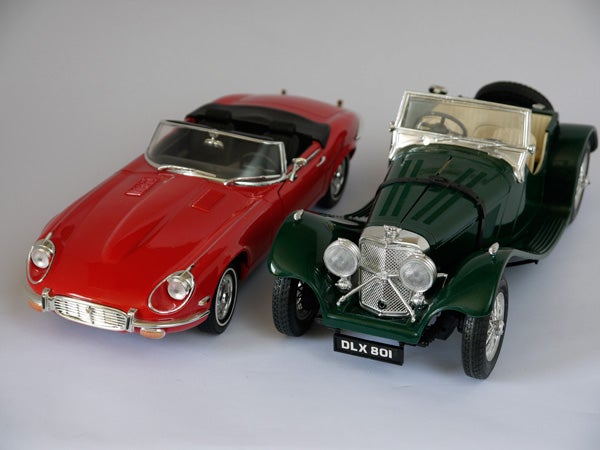
This is the full frame at 100 ISO.
—-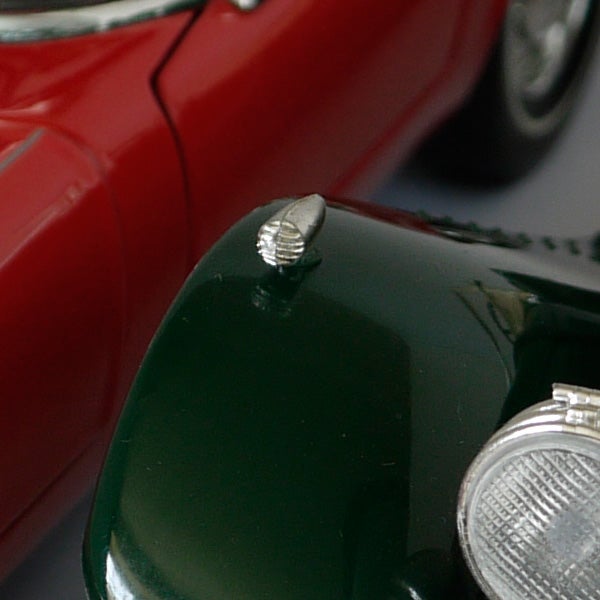
Image quality at 100 ISO is superb.
—-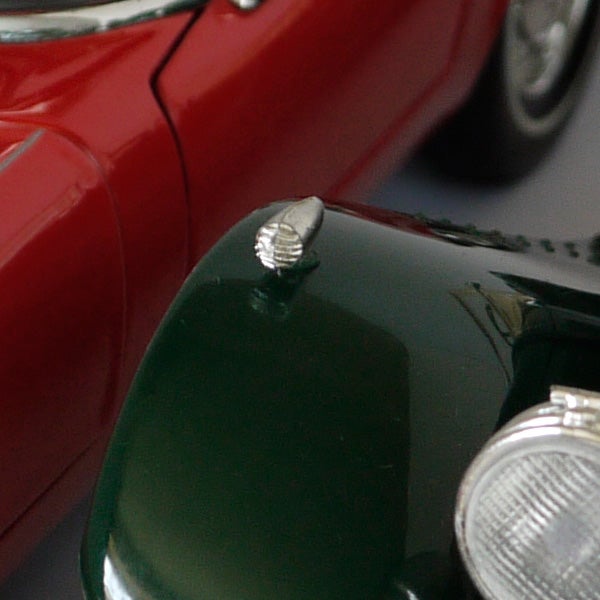
Still no problems at 200 ISO.
—-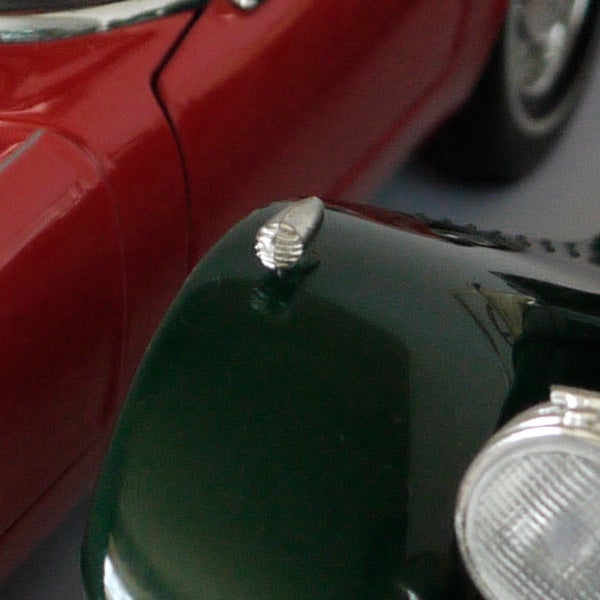
There is a hint of colour distortion on the green channel, that the red is looking a little blotchy at 400 ISO.
—-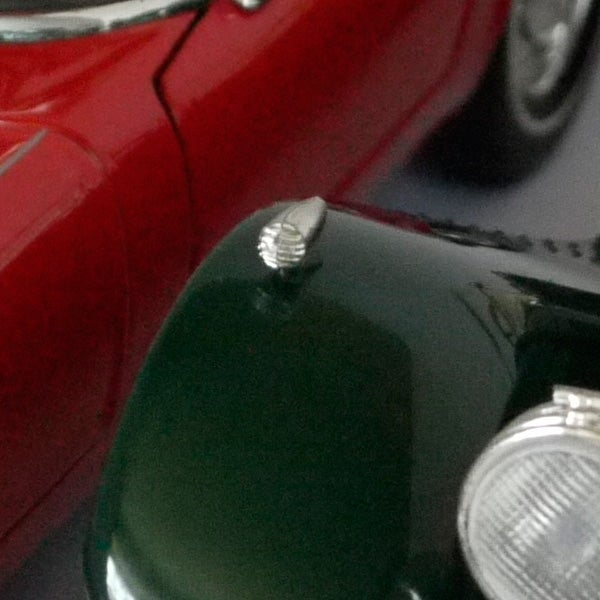
Noise problems really start at 800 ISO, with blotchy colour on the red channel and noise everywhere.
—-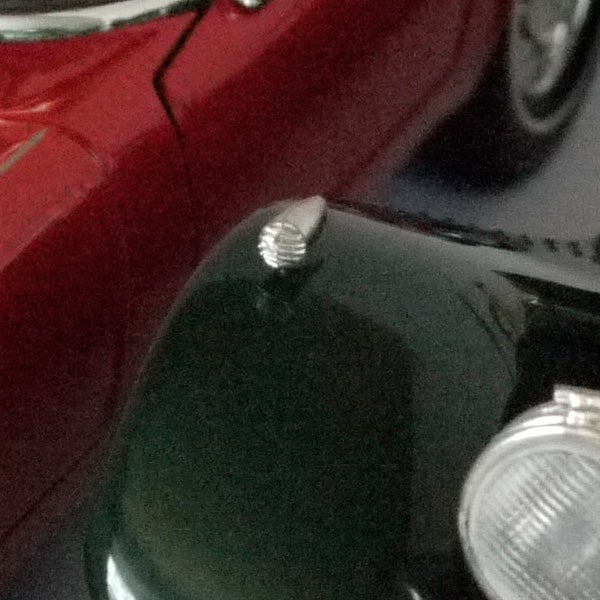
Worse still at 1600 ISO.
—-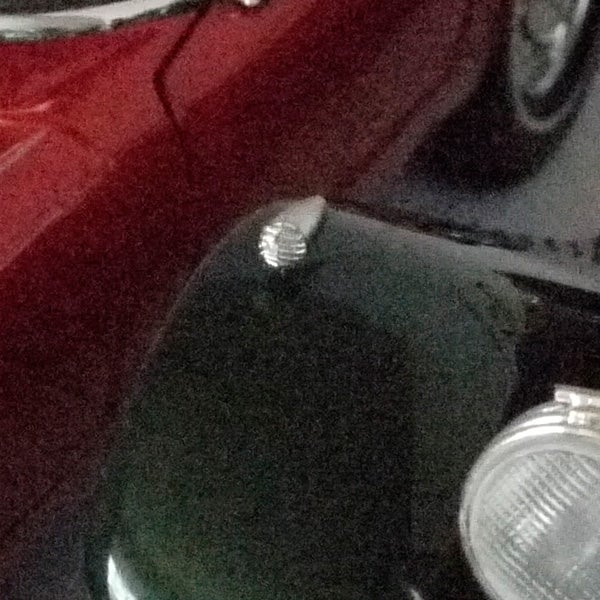
Image quality is really suffering at 3200 ISO.
—-
Really, why bother giving a camera a 6400 ISO maximum sensitivity when the results look like this?
—-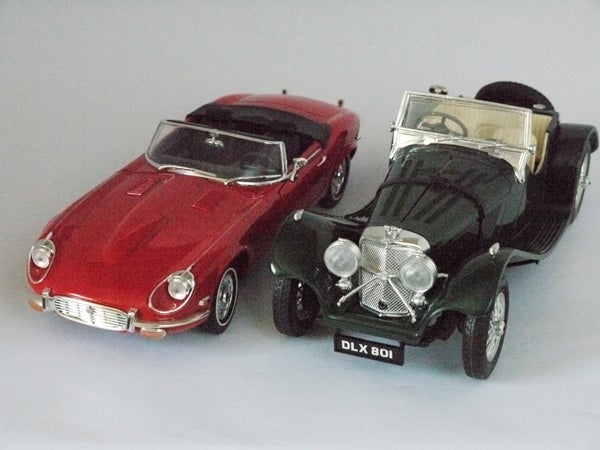
This is the full frame at 6400 ISO.
—-
”A range of general test shots are shown over the next two pages. In some cases, the full size image has been reduced for bandwidth purposes, and a crop taken from the original full resolution image has been placed below it to show the overall image quality. Some other pictures may be clicked to view the original full-size image. ”
—-
Here’s the usual detail test shot of the West Window of Exeter Cathedral, for you to compare with other cameras. See below for a full res crop, or click to see the whole picture. The downloadable file is approximately 6.9MB.
—-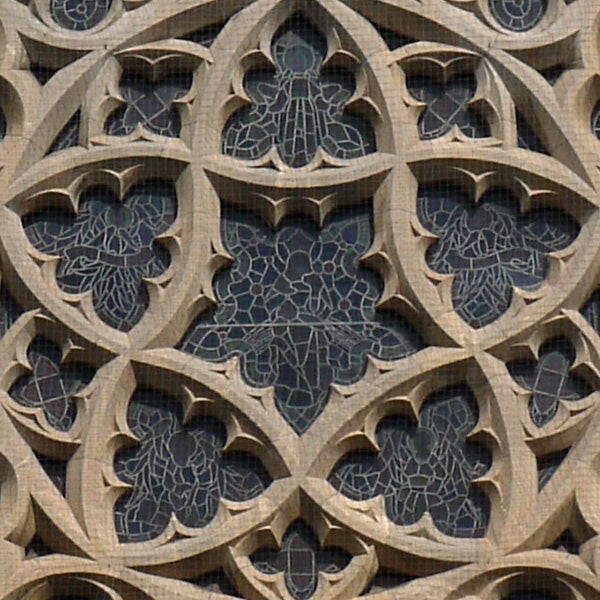
There is a lot of detail in this 1:1 crop from the image above, certainly more than an equivalent 12MP compact.
—-
The new kit lens is very good, with hardly any wide-angle distortion.
—-
Centre sharpness is excellent.
—-
Corner sharpness is also superb.
—-
”Here are some general test shots to help evaluate the camera’s overall image quality, including dynamic range, colour rendition and the zoom range of the lens. Some pictures may be clicked to download the full size original image. ”
—-
The wide angle end of the 14-42mm kit lens is equivalent to approximately 28mm. Download file size approximately 6.5MB.
—-
The telephoto end is roughly equivalent to 80mm. Download file size approximately 7.5MB.
—-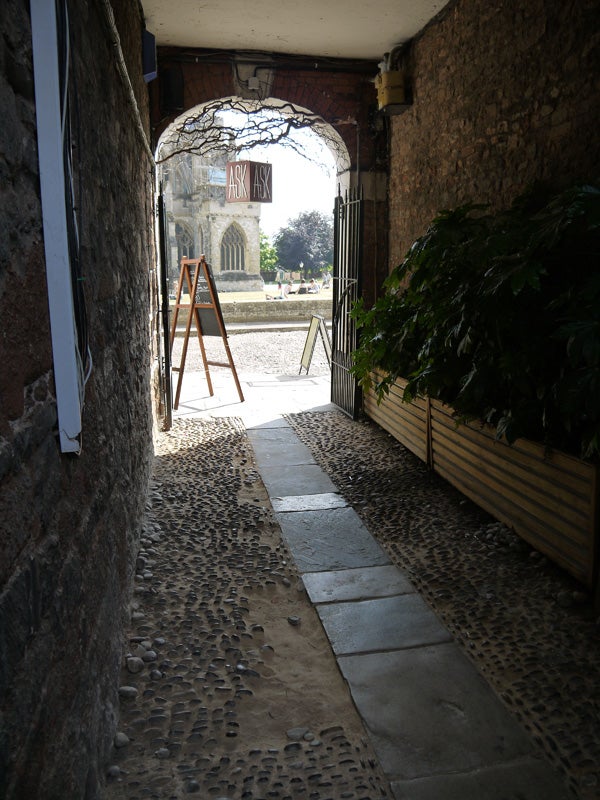
Dynamic range is good, especially in iAuto mode.
—-
Theo Jansen was showing one of his amazing sculpture/creature/machines at Exmouth. See why they’re so amazing on YouTube.
—-
Trusted Score
Score in detail
-
Value 7
-
Image Quality 8
-
Build Quality 9
Features
| Camera type | Mirrorless Camera, Digital SLR |
| Megapixels (Megapixel) | 12.1 Megapixel |
| Optical Zoom (Times) | By lensx |
| Image Sensor | 17.3x13mm Live MOS |
| Optical focal length | By lens (kit lens 14-42mm, 28-82mm) |
| Shutter speed | 60 secs to 1/4000th sec |
| Auto focus | 23-zone contrast detection AF |
| Manual focus | Yes, by lens |
| Max output resolution | 4000x3000 |
| Other resolutions | 2816x2112(M), 2048x1536(S)/[3:2] 4000X2672(L), 2816X1880(M), 2048X1360(S)/[16:9] 4000X2448(L), 2816X1584(M), 1920X1080(S)/[1:1] 2992X2992(L), 2112X2112(M), 1504X1504(S) |
| Focus range | By lens (kit lens 30cm to infinity) |
| Exposure control | 144-zone multi-pattern sensing system |
| Exposure metering | Intelligent Multiple, Centre-weighted, Spot |
| Exposure compensation | +/-3EV in 1/3 EV Steps |
| Image Stabilisation | N/A (OIS lenses available) |
| ISO settings | Auto, 100-6400 |
| LCD Monitor | 3-inch, 460k dots |
| Viewfinder | TFT LCD, 202k dots |
| Flash range | Guide number 11 at 100 ISO |
| Flash modes | Auto, Auto/Red-eye reduction, Forced On, Forced Off, Slow Sync, |
| White balance modes | Auto, Daylight, Cloudy, Shade, Halogen, Flash, White Set 1/2, Colour temperature setting |
| Drive modes | H: 3.2 frames/sec, M: 2.6 frames/sec (with LiveView), L: 2 frames/sec (with LiveView) |
| Image formats | JPEG, Exif 2.21, RAW, Motion JPEG |
| Picture adjustments | Contrast, sharpness, saturation, noise reduction |
| Video (max res/format) | 1280x720, 60p (sensor output is 30fps), Motion JPEG |
| Movie length | 100 mins |
| Self timer | 2/10 secs |
| Memory card slot | SD,SDHC,SDXC |
| Supplied memory | N/A |
| Batteries supplied | 7.5V, 1250mAh Li-ion rechargeable |
| Charger supplied | Yes |
| A/V output | NTSC, PAL |
| Charging/Computer Connection | USB 2.0 |
| HDMI | Yes |
| AV Out | Yes |
| Manual | 198-page printed manual |
Physical Specifications
| Dimensions Width (Millimeter) | 124mm |
| Depth (Millimeter) | 83.6mm |
| Weight (body only) (Kilogram) | 336gkg |

